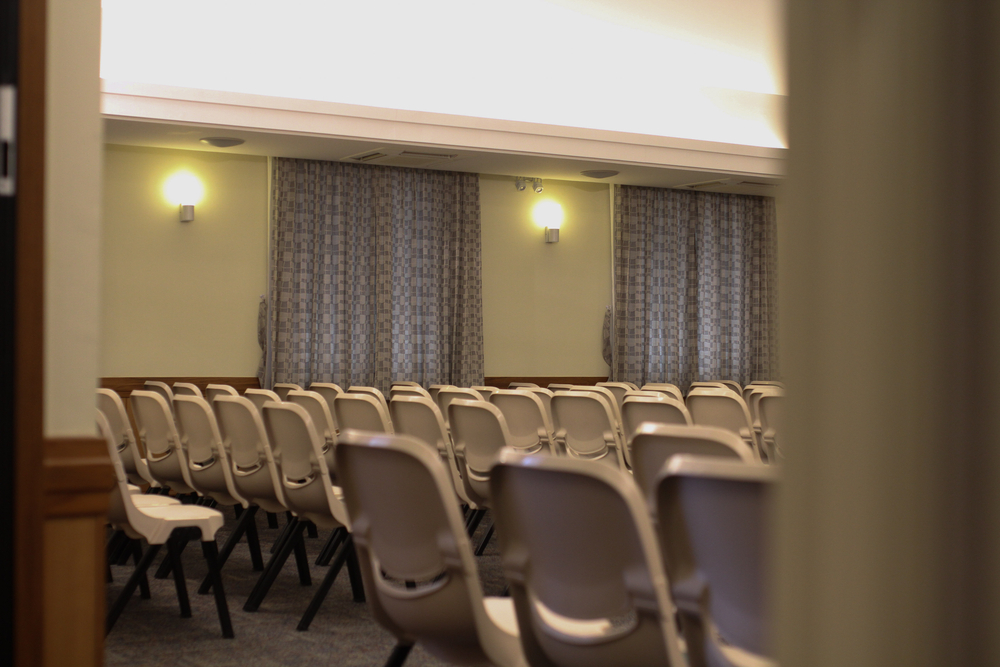Re-evaluating Addiction: The Immoral Moralizing of Alcoholics Anonymous

As of 2019, Alcoholics Anonymous boasts more than 2 million members across 150 countries, making it the most widely implemented form of addiction treatment worldwide. The 12-step program has become ubiquitous within medical science and popular culture alike, to the extent that most of us take its potency for granted. According to Eoin F. Cannon’s The Saloon and the Mission: Addiction, Conversion, and the Politics of Redemption in American Culture, A.A. has “spread its ideas and its phraseology as a natural language of recovery, rather than as a framework with an institutional history and a cultural genealogy . . . A.A.’s deep cultural penetration is most evident in the way the recovery story it fostered can convey intensely personal, experiential truth, largely free from the implications of persuasion or imitation that attached to its precursors.” And yet, medical science continues to debate the effectiveness of A.A., or if it’s even effective at all. Critics have pointed out that the organization’s moral approach to suffering and redemption leaves much to be desired for many addicts.
It’s worth beginning with a basic overview of the social and historical context of A.A. The organization has its roots in the Oxford Group, a fellowship of Christian evangelical ministers who believed in the value of confession for alleviating the inherent sinfulness of humanity. Bill Wilson, who would go on to co-found Alcoholics Anonymous in 1935, was a member of this group, and based many of the founding principles of his organization on the teachings of the Oxford Group. A.A. was also rooted in a much broader historical moment. As Cannon explains, “A.A. embraced the disease concept of alcoholism in an era of rising medical authority and popular psychology. It formulated a spirituality that used the language of traditional Christian piety but was personal and pragmatic enough to sit comfortably with postwar prosperity.” Also crucial was “the evangelical energies and professional expertise of its early members, many of whom were experienced in marketing and public relations.” A.A.’s marketing was so effective at embedding the organization in popular culture that virtually all depictions of addiction and recovery have been colored by the 12-steps-approach, even into the 21st century.
Furthermore, the Great Depression was ending as the group achieved national prominence, and its philosophy was closely aligned with that of the New Deal. As Cannon explains, the pain of the economic crisis (which was characterized by contemporaries as a kind of drunken irresponsibility) was transformed into an opportunity for a moral makeover, a narrative pushed by FDR and the New Deal that A.A. either seized upon or unconsciously imitated. Cannon explains that “recovering narrators described their experiences of decline and crisis drew on the same kind of social material that, writ large, defined the national problem: the bewildering failure of self-reliant individualism, as evidenced in job loss, privation, and family trauma. A.A. narrative, just like FDR’s New Deal story, interpreted this failure as a hard-earned lesson about the limits of self-interest.” In this sense, A.A. is hardly apolitical or ahistorical. It was forged by political and economic currents of the early 20th century, and its ascendancy was hardly natural or inevitable.
The spiritual dimension of A.A. is impossible to ignore. The Oxford Group’s foundational influence is evident in the famous the 12-step program: for example, steps 2 and 3 read,
“2. Came to believe that a Power greater than ourselves could restore us to sanity.
3.. Made a decision to turn our will and our lives over to the care of God as we
understood Him.”
The final step, “Having had a spiritual awakening as the result of these Steps, we tried to carry this message to alcoholics, and to practice these principles in all our affairs,” sounds like a call for religious conversion. Most would agree that medical treatment should be secular, so why is alcoholism an exception?
Furthermore, an emphasis on spirituality doesn’t necessarily make addiction treatment more effective. A 2007 study conducted for the Journal for the Scientific Study of Religion acknowledges that “Studies focusing on religiosity as a protective factor tend to show a weak to moderate relationship to substance use and dependence . . . Studies that have examined religiosity as a personal resource in treatment recovery also tend to report weak to moderate correlations with treatment.” However, the 2007 study takes issue with this data. The researchers argue that most previous studies rely “on the assumption that religiosity, although an outcome of socialization, is an internal attribute that functions as a resource to promote conventional behavior . . . An alternative model to this individualistic, psychological framework is a sociological model where religion is viewed as an attribute of a social group.” In other words, we focus too much on how religion functions for individuals instead of how religion functions in a social context.
Rather, this study uses the “moral community” hypothesis, first articulated by sociologists Stark and Bainbridge, as a framework for understanding addiction treatment. This theory argues that individual interactions with religion (how much importance you place on it or specific beliefs you subscribe to) are not as important as your entrenchment in a religious community, which is the ultimate predictor of long-term commitment to and effectiveness of treatment. The results of the 2007 study seem to support this idea; the data “revealed that an increase in church attendance and involvement in self-help groups were better predictors of posttreatment alcohol and drug use than the measure of individual religiosity.” The study found that “individuals with higher levels of religiosity tended to have higher levels of commitment” to AA, but more broadly, “in some programs religiosity functioned as a positive resource whereas in other programs it served as a hindrance to recovery.” In other words, religion isn’t universally helpful, depending on the person and how easy they find it to assimilate into their moral community. Perhaps those who already have incorporated organized religion into their life will be better equipped for group participation in the context of addiction recovery. What all of this seems to suggest is that A.A. is only effective if you’re already receptive to its framework, which hardly makes it a cure-all for alcoholism. Non-Christians and atheists who drink are more or less left out in the cold.
In fact, there are very few studies that conclusively support A.A. as the best or only treatment plan for alcoholism. As writer Gabrielle Glaser pointed out in an article for The Atlantic, “Alcoholics Anonymous is famously difficult to study. By necessity, it keeps no records of who attends meetings; members come and go and are, of course, anonymous. No conclusive data exist on how well it works.” The few studies that have tested A.A.’s effectiveness tend to find less than impressive results. For example, psychiatrist Lance Dodes estimated in his 2015 book The Sober Truth: Debunking the Bad Science Behind 12-Step Programs and the Rehab Industry that the actual rate of success for the A.A. program is somewhere between 5 and 8 percent, based on retention rates and long-term commitment. As of 2017, there are 275 research centers devoted to studying alcohol addiction worldwide. The majority of research is conducted in multi-disciplinary research institutions, and nearly half of all research on alcoholism comes out of the U.S, which given how prominent the A.A. approach is here, may skew what facets of addiction are given attention by researchers.
Despite a dearth of proof, A.A. claims to have a 75% percent success rate. According to the movement’s urtext Alcoholics Anonymous: The Story of How Many Thousands of Men and Women Have Recovered from Alcoholism (affectionately referred to as “The Big Book” by seasoned A.A. members),
“Rarely have we seen a person fail who has thoroughly followed our path. Those who do not recover are people who cannot or will not completely give themselves to this simple program, usually men and women who are constitutionally incapable of being honest with themselves . . . They are not at fault; they seem to have been born that way.”
While alcoholism can have a genetic component, the idea that some people are simply doomed to be incurable because of the way they were born (or that any treatment plan for addiction can be “simple”) is deeply troubling. Reading this passage from the Big Book, one can’t help but notice a parallel to early 20th-century eugenicists like Walter Wasson, who argued in 1913 that alcoholics (who he labeled “mental defectives”) should be “segregated and prevented from having children” so as not to pass down their condition and further pollute the gene pool. Eugenicists believed that alcoholism was incurable, and while A.A. ostensibly believes that it can be cured, they still believe that some are genetically destined to always drink. If their treatment plan for you doesn’t work, it’s simply your own fault, and you’ll never be able to get help at all.
Since its post-Depression inception, A.A. has relied on a moral framework that places blame on the individual rather than society at large. Alcoholism is understood as an innate failure of the individual, not a complex condition brought about by a number of economic, social, and genetic factors. As one former A.A. member explained,
“The AA programme makes absolutely no distinction between thoughts and feelings – a key factor in cognitive behavioural therapy, which is arguably a more up-to-date form of mental health technology. Instead, in AA, alcoholism is caused by ‘defects of character,’ which can only be taken away by surrender to a higher power. So, in many ways, it’s a movement based on emotional subjugation . . . anything you achieve in AA is through God’s will rather than your own. You have no control over your life, but the higher power does.”
Many individuals have found comfort and support in A.A., but it seems that the kind of moral community it offers is only accessible to those with a religious bent and predisposition to the treatment plan. For those who drink to escape crushing poverty, racial inequality, or the drudgery of capitalism, A.A. often offers pseudoscience instead of results, moralizing condemnation instead of medical treatment and genuine understanding.




